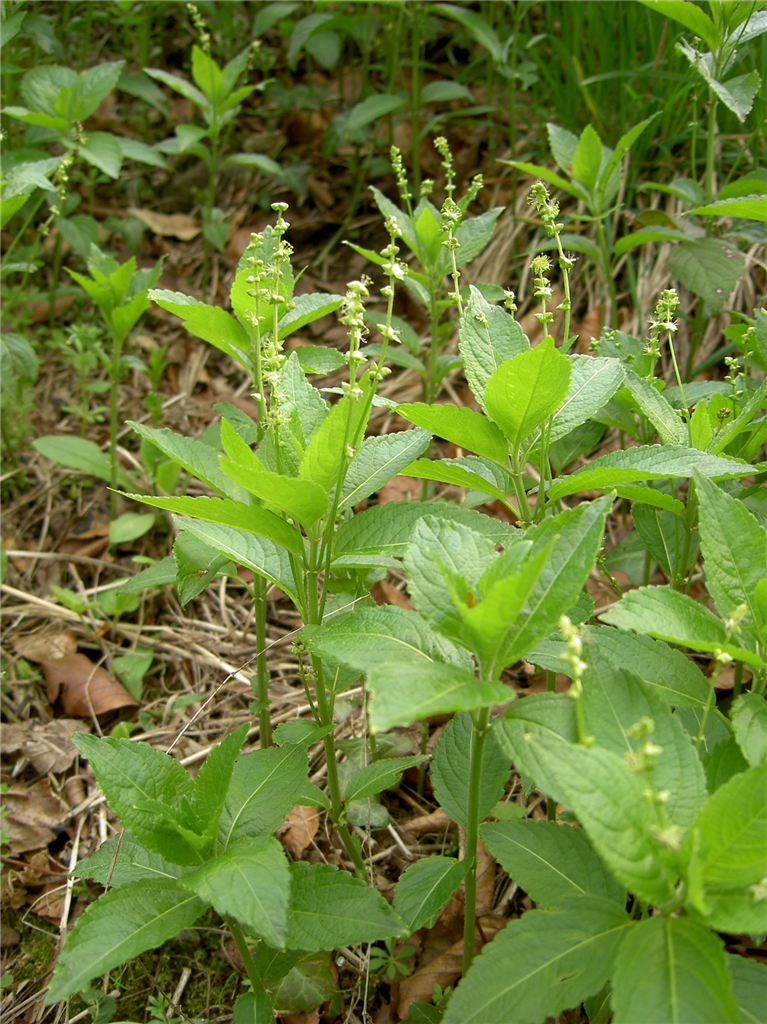A Ranger writes
Countryside Ranger Richard English shares his knowledge of early-flowering dog's mercury and early-flying butterflies.
Early-flowering is a strategy often adopted by plants which make up part of the ground flora of woodlands. This way they can get an important part of their life-cycle over and done with before the shade from the trees overhead becomes too great. One example of this is dog’s mercury, which can be seen in many of our woods at the moment. It’s a fairly unremarkable-looking plant with dark green, toothed leaves and clusters of small, paler green flowers. Dog’s mercury is usually dioecious - that is each plant will have either male or female flowers, but not both. The male flowers are carried on long spikes which stick up above the main plant, whilst the female are on shorter stalks tucked away within the leaves. Dog’s mercury can form extensive patches, often carpeting the woodland floor to the exclusion of almost everything else. This is, in part, down to its ability to spread by putting out underground stems known as rhizomes.
 Dog's Mercury
Dog's Mercury
There is some debate about how dog’s mercury got its name. Several wildflowers include a reference to dogs in their name (including dog violet and dog rose) and this is often taken to mean that the plant is a very common one. In this case, however, it has been argued that the term “dog’s” means false or bad and is related to the fact that the plant is toxic.
The fact that some flowers have started blooming means that we’ll start to see more and more of those animal species which rely on nectar for their food. Butterflies like warm days, since they need a lot of energy to fly around. So, at this time of the year early-flying butterflies can often be seen sunning themselves in the morning in an attempt to warm up. One species to look out for this month is the small tortoiseshell. This is one of our commonest butterflies, although numbers have fallen in recent years and there is concern for its long-term future. The upper side of the wings have very distinctive markings. They are predominantly bright orange, but have very obvious black and yellow stripes along the front edge. Along the trailing edge there are a series of small blue spots set on a black background. This combination of orange, yellow and black is thought to be a warning to predators about the butterfly’s unpleasant taste. The undersides of the wings are very different, being assorted drab shades of brown. This provides excellent camouflage, giving the butterfly a certain amount of security when resting or hibernating.
 Small Tortoiseshell butterfly
Small Tortoiseshell butterfly
Adult small tortoiseshells can be seen almost anywhere, but they do like a nice nettle patch. The caterpillars feed almost exclusively on nettles, so females will search out these plants before laying eggs on them. So, if it wasn’t for those nasty, jaggy nettles we wouldn’t have so many lovely butterflies.